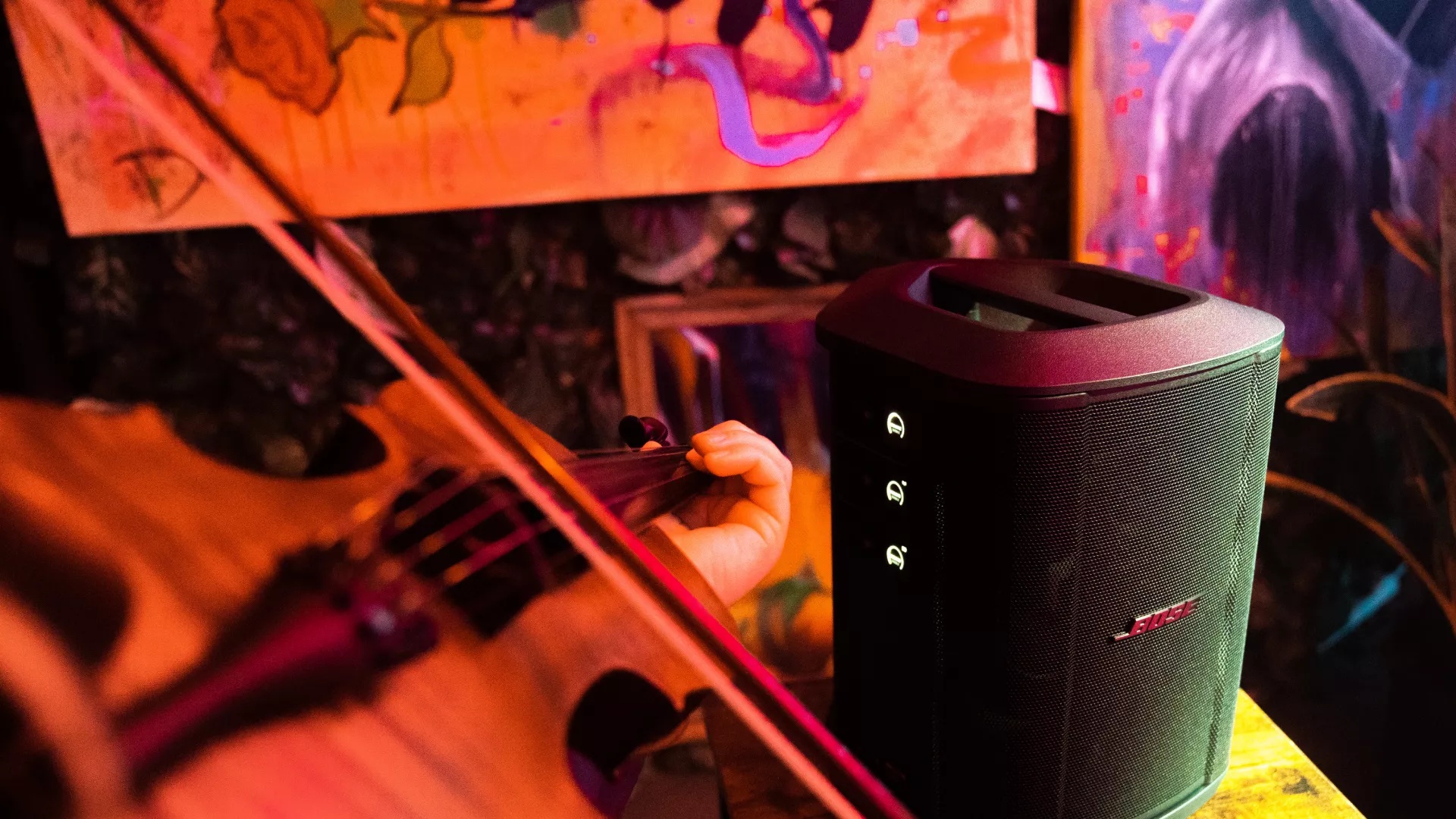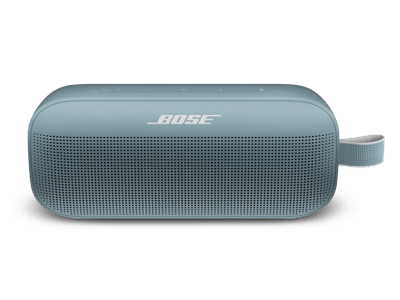At the heart of any audio experience is connection. While that's partly about choosing a song, show, or podcast that speaks to you in a personal way, it also encompasses the digital link between the device playing them and the speaker delivering them — whether it's Bluetooth headphones, Bluetooth earbuds, or Bluetooth speakers.
Bluetooth technology is one of the most important wireless technologies for nearly all of today's media players, providing the audio signal route and through your speaker of choice. That makes a strong Bluetooth range and connection essential to clear and strong audio.
How far does Bluetooth reach in Bose products? Thanks to the latest Bluetooth 5.3 version, Bose products have an effective range of up to 33 feet. That includes Bose QuietComfort Ultra Earbuds, Bose QuietComfort Ultra Headphones, and our range of Bluetooth speakers, such as the Bose SoundLink Flex.
Bluetooth range is influenced by many factors. So, understanding how it works and what can impede the signal distance and strength is necessary to achieve the rich, immersive audio experience you want. Here's what you need to know.
How far does Bluetooth reach?
While Bluetooth signals are flexible, they're generally weaker than Wi-Fi® or radio. This means they have a limited range that varies according to the product and Bluetooth classification. How far does Bluetooth usually reach? Commercial electronics, including most smartphones, headphones, earbuds, and portable speakers, fall into class 2, which gives them a range of about 33 feet.
Bluetooth 5.0 and above strengthen range and quality. For example, they reduce the back-and-forth communication between the receiver and transmitter and improve channel classification to better identify clearer channels for the signal to travel.
Keeping your connection strong at the maximum range starts with understanding how Bluetooth works. Basically, the technology enables two devices to connect with each other through ultra-high frequency radio waves without using the internet. The audio signals then quickly travel from your device as a remote control to your speaker along these waves. Bluetooth also keeps the audio solely between the two paired units, as the connection requires a shared digital passkey.
The high-quality Bluetooth in Bluetooth headphones and Bluetooth earbuds makes pairing and monitoring the connection easy, helping to ensure maximum range. Just look for the blinking blue light on the devices to launch the connection and a solid blue to indicate it's landed. Voice commands "ready to connect" and "connected to …" also provide assistance and confirmation.
The Bose app is another way to manage the Bluetooth connection. Bose products can keep a high number of connected devices — up to eight with the SoundLink Flex Bluetooth Speaker. When you add a new one, it will drop the least used speaker.
Why do you need Bluetooth?
Anyone who can remember a world of wires — especially the frustrating struggles to untangle them — knows how much wireless technologies like Bluetooth have improved the audio experience. Removing wires frees you to enjoy your favorite music and shows with much less muss and fuss.
This improved comfort and convenience are the driving force of Bluetooth technology's ongoing integration into nearly every aspect of life. Finding the best headphones for work will be a game changer for your day to day if you're used to connecting devices via wires.
What affects Bluetooth range?
As any earbud or headphone wearer knows, the quality of your Bluetooth connection and range can change from day to day and use to use. That's because a range of elements can restrict or enhance it. Knowing these common elements can help ensure you maintain the strong, clear connection you want.
Physical obstructions
Like radio waves, Bluetooth can pass through solid objects and remain strong. However, the more obstructions between the device and the speaker, the more they impact the signal. The type of material it passes through matters, too. Wood, glass, and plastic are Bluetooth-friendly, but metal, plaster, and concrete aren't. The human body isn't either, so if the device is located on or close to your body, there's potential for disruption there. Plus, your body may sometimes cover the Bluetooth antenna, making it harder for it to communicate with others. In short, the clearer the digital pathways, the better and farther the connection.
Competing frequencies
With Bluetooth and Wi-Fi nearly ubiquitous in today's world, there's a lot of competition for air space, especially with Wi-Fi routers, which share the same 2.4-gigahertz frequency. As the signals overlap, interference can impede signal strength and range. This becomes a particular challenge in dense urban environments where signal density is significant.
Bluetooth and water don't get along. This is because water molecules absorb the signal, limiting range and performance. So, when there's a lot of water in the air from humidity or rain, your Bluetooth signal may not travel as well as it would on a dry, sunny day. Cold and heat, on the other hand, don't affect Bluetooth signals unless the device itself is damaged from long-term exposure to extreme levels of either.
Battery life
Bluetooth takes energy to work well, and the lower the charge on your device, the weaker the connection and ability to transmit power. Keeping a full charge can help ensure a strong signal up to the maximum range.
Transmit power
The louder you speak, the more people can hear you, and the same goes for Bluetooth technology. This is called transmit power. Transmit powers range from -20 dBm (0.01mW) to +20 dBm (100 mW), allowing you to hear it clearly at longer distances.
Receiver sensitivity
Receiver sensitivity is the measure of the minimum signal strength a receiver can interpret. Put simply, it allows you to be able to hear the quietest sound clearly from your device. The receiver sensitivity on Bluetooth technology must be in the -70 dBM to -82 dBm range.
Materials quality
You get what you pay for, and that applies to Bluetooth, too. The cheaper materials of low-end headphones, earbuds, and portable speakers naturally impact Bluetooth strength and can shorten the long range. That also extends to the quality of the battery, the efficiency of software, and the existence of water and sweat-resistant materials in the earbuds, headphones, and portable speakers. Investing in higher-quality devices can boost Bluetooth power and range.
Creating strong connections
A strong Bluetooth connection enables freer actions, whether it's running to music, meditating to a soundscape, playing DJ for friends, or queuing up the latest podcast while cleaning the house. The greater the range, the greater the opportunity to strengthen the connection among the people you know, passions you follow — and audio you love.



